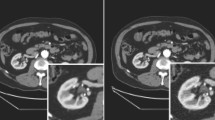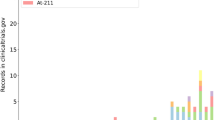Abstract
Purpose
Positron emission tomography (PET) image quality can be improved by higher injected activity and/or longer acquisition time, but both may often not be practical in preclinical imaging. Common preclinical radioactive doses (10 MBq) have been shown to cause deterministic changes in biological pathways. Reducing the injected tracer activity and/or shortening the scan time inevitably results in low-count acquisitions which poses a challenge because of the inherent noise introduction. We present an image-based deep learning (DL) framework for denoising lower count micro-PET images.
Procedures
For 36 mice, a 15-min [18F]FDG (8.15 ± 1.34 MBq) PET scan was acquired at 40 min post-injection on the Molecubes β-CUBE (in list mode). The 15-min acquisition (high-count) was parsed into smaller time fractions of 7.50, 3.75, 1.50, and 0.75 min to emulate images reconstructed at 50, 25, 10, and 5% of the full counts, respectively. A 2D U-Net was trained with mean-squared-error loss on 28 high-low count image pairs.
Results
The DL algorithms were visually and quantitatively compared to spatial and edge-preserving denoising filters; the DL-based methods effectively removed image noise and recovered image details much better while keeping quantitative (SUV) accuracy. The largest improvement in image quality was seen in the images reconstructed with 10 and 5% of the counts (equivalent to sub-1 MBq or sub-1 min mouse imaging). The DL-based denoising framework was also successfully applied on the NEMA-NU4 phantom and different tracer studies ([18F]PSMA, [18F]FAPI, and [68 Ga]FAPI).
Conclusion
Visual and quantitative results support the superior performance and robustness in image denoising of the implemented DL models for low statistics micro-PET. This offers much more flexibility in optimizing preclinical, longitudinal imaging protocols with reduced tracer doses or shorter durations.






Similar content being viewed by others
References
Yao R, Lecomte R, Crawford ES (2012) Small-animal PET: what is it, and why do we need it? J Nucl Med Technol 40(3):157–165
Miyaoka RS, Lehnert AL (2020) Small animal PET: a review of what we have done and where we are going. Phys Med Biol 65(24):24TR04
Piron S, Verhoeven J, Courtyn J, Kersemans K, Descamps B, Pieters L, Vral A, Vanhove C, De Vos F (2022) Preclinical comparative study of [18F]AlF-PSMA-11 and [18F]PSMA-1007 in varying PSMA expressing tumors. Sci Rep 12(1):15744
Lee IK, Noguera-Ortega E, Xiao Z, Todd L, Scholler J, Song D, Liousia M, Lohith K, Xu K, Edwards KJ, Farwell MD, June CH, Albelda SM, Puré E, Sellmyer MA (2022) Monitoring therapeutic response to anti-FAP CAR T cells using [18F]AlF-FAPI-74. Clin Cancer Res 28(24):5330–5342
Lau J, Rousseau E, Kwon D, Lin KS, Bénard F, Chen X (2020) Insight into the development of PET radiopharmaceuticals for oncology. Cancers (Basel) 12(5):1312
Hume SP, Jones T (1998) Positron emission tomography (PET) methodology for small animals and its application in radiopharmaceutical preclinical investigation. Nucl Med Biol 25(8):729–732
Vanhove C, Bankstahl JP, Krämer SD, Visser E, Belcari N, Vandenberghe S (2015) Accurate molecular imaging of small animals taking into account animal models, handling, anaesthesia, quality control and imaging system performance. EJNMMI Phys 2(1):31. https://doi.org/10.1186/s40658-015-0135-y
Molinos C, Sasser T, Salmon P, Gsell W, Viertl D, Massey JC, Mińczuk K, Li J, Kundu BK, Berr S, Correcher C, Bahadur A, Attarwala AA, Stark S, Junge S, Himmelreich U, Prior JO, Laperre K, Van Wyk S, Heidenreich M (2019) Low-dose imaging in a new preclinical total-body PET/CT scanner. Front Med (Lausanne) 6:88
McDougald WA, Collins R, Green M, Tavares AAS (2017) High dose microCT does not contribute toward improved microPET/CT image quantitative accuracy and can limit longitudinal scanning of small animals. Front Phys 5:50. https://doi.org/10.3389/fphy.2017.00050
Taschereau R, Chatziioannou AF (2007) Monte Carlo simulations of absorbed dose in a mouse phantom from 18-fluorine compounds. Med Phys 34(3):1026–1036
Decuyper M, Maebe J, Van Holen R, Vandenberghe S (2021) Artificial intelligence with deep learning in nuclear medicine and radiology. EJNMMI Phys 8(1):81
Liu H, Wu J, Lu W, Onofrey JA, Liu YH, Liu C (2020) Noise reduction with cross-tracer and cross-protocol deep transfer learning for low-dose PET. Phys Med Biol 65(18):185006
Xue S, Guo R, Bohn KP, Matzke J, Viscione M, Alberts I, Meng H, Sun C, Zhang M, Zhang M, Sznitman R, El Fakhri G, Rominger A, Li B, Shi K (2022) A cross-scanner and cross-tracer deep learning method for the recovery of standard-dose imaging quality from low-dose PET. EJNMMI 49(6):1843–1856
Kaplan S, Zhu YM (2019) Full-dose PET image estimation from low-dose PET image using deep learning: a pilot study. J Digit Imaging 32(5):773–778
Lu W, Onofrey JA, Lu Y, Shi L, Ma T, Liu Y, Liu C (2019) An investigation of quantitative accuracy for deep learning based denoising in oncological PET. Phys Med Biol 64(16):165019
Dutta K, Liu Z, Laforest R, Jha A, Shoghi KI (2022) Deep learning framework to synthesize high-count preclinical PET images from low-count preclinical PET images. Medical Imaging 2022: Physics of Medical Imaging, vol 12031. SPIE, pp 351–360
Amirrashedi M, Sarkar S, Mamizadeh H, Ghadiri H, Ghafarian P, Zaidi H, Ay MR (2021) Leveraging deep neural networks to improve numerical and perceptual image quality in low-dose preclinical PET imaging. Comput Med Imaging Graph 94:102010
Krishnamoorthy S, Blankemeyer E, Mollet P, Surti S, Van Holen R, Karp JS (2018) Performance evaluation of the MOLECUBES β-CUBE-a high spatial resolution and high sensitivity small animal PET scanner utilizing monolithic LYSO scintillation detectors. Phys Med Biol 63(15):155013
Ronneberger O, Fischer P, Brox T (2015) U-net: Convolutional networks for biomedical image segmentation. Medical Image Computing and Computer-Assisted Intervention–MICCAI 2015: 18th International Conference, Munich, Germany, October 5-9, 2015, Proceedings, Part III 18. Springer International Publishing, pp 234–241
Nair V, Hinton GE (2010) Rectified linear units improve restricted Boltzmann machines. Proceedings of the 27th International Conference on Machine Learning (ICML-10). pp 807–814
Kingma DP, Ba J (2014) Adam: A method for stochastic optimization. arXiv preprint arXiv:1412.698
National Electrical Manufacturers Association (2008) Performance measurements of small animal positron emission tomographs (PETs). NEMA Standards Publication, NU4-2008. 1-23
Gavriilidis P, Koole M, Annunziata S, Mottaghy FM, Wierts R (2022) Positron range corrections and denoising techniques for gallium-68 PET imaging: a literature review. Diagnostics 12(10):2335
Muller FM, Maebe J, Vanhove C, Vandenberghe S (2023) Dose reduction and image enhancement in micro-CT using deep learning. Med Phys 50:5643
Teuho J, Riehakainen L, Honkaniemi A, Moisio O, Han C, Tirri M, Liu S, Grönroos TJ, Liu J, Wan L, Liang X, Ling Y, Hua Y, Roivainen A, Knuuti J, Xie Q, Teräs M, D’Ascenzo N, Klén R (2020) Evaluation of image quality with four positron emitters and three preclinical PET/CT systems. EJNMMI Res 10(1):155
Acknowledgements
The authors would like to thank Dr. Pieter Mollet and Dr. Bert Vandeghinste (Molecubes) for their technical support with the β-CUBE and Dr. Elizabeth Li and Dr. Srilalan Krishnamoorthy for their suggestions on data visualization. The authors would like to acknowledge support from Small Animal Imaging Facility at UPenn.
Funding
This work was supported by FM’s UGent BOF doctoral grant. FM is financially supported by the Belgian American Educational Foundation and Fulbright Foreign Student Program.
Author information
Authors and Affiliations
Corresponding author
Ethics declarations
Conflict of Interest
The authors declare no competing interests.
Additional information
Publisher's Note
Springer Nature remains neutral with regard to jurisdictional claims in published maps and institutional affiliations.
Florence M. Muller and Boris Vervenne are co-first authors.
Supplementary Information
Below is the link to the electronic supplementary material.
Rights and permissions
Springer Nature or its licensor (e.g. a society or other partner) holds exclusive rights to this article under a publishing agreement with the author(s) or other rightsholder(s); author self-archiving of the accepted manuscript version of this article is solely governed by the terms of such publishing agreement and applicable law.
About this article
Cite this article
Muller, F.M., Vervenne, B., Maebe, J. et al. Image Denoising of Low-Dose PET Mouse Scans with Deep Learning: Validation Study for Preclinical Imaging Applicability. Mol Imaging Biol 26, 101–113 (2024). https://doi.org/10.1007/s11307-023-01866-x
Received:
Revised:
Accepted:
Published:
Issue Date:
DOI: https://doi.org/10.1007/s11307-023-01866-x




